Patterns
/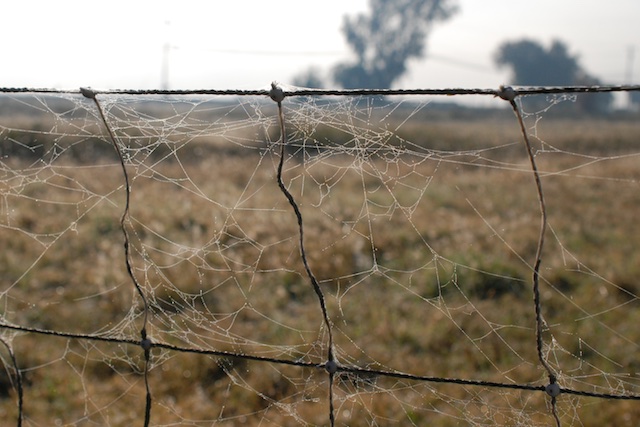
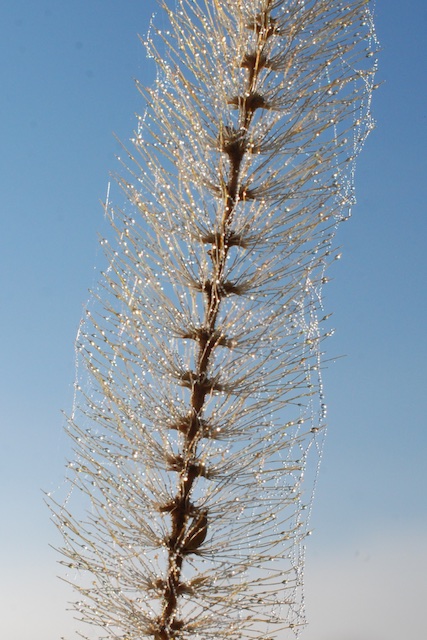
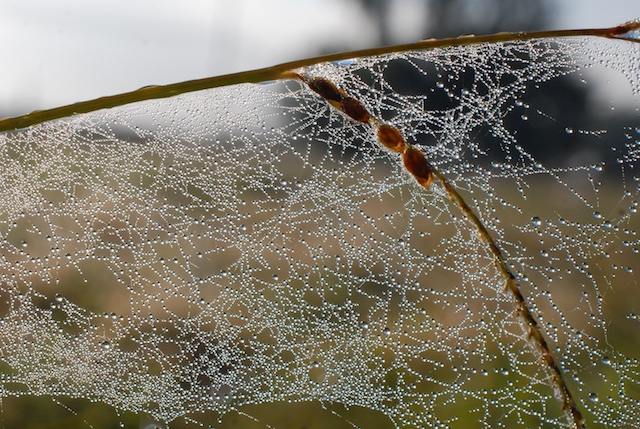
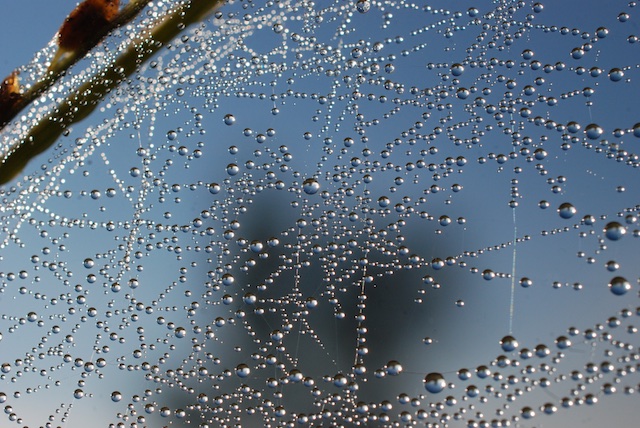
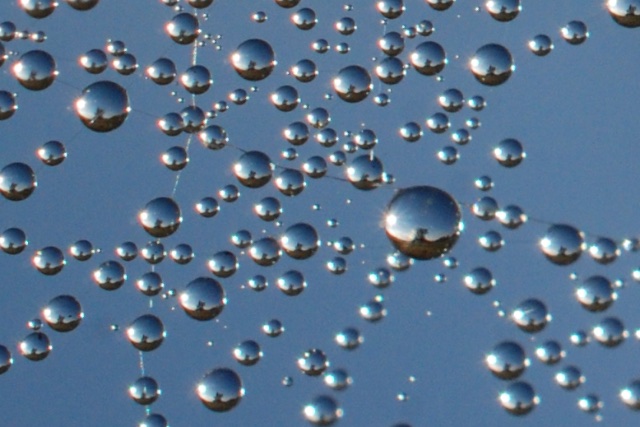
In the last post we had come home to California about sunset, but we were still a long way from home.
We had decided to camp at Joshua Tree National Park, but arrived there after dark. Mid-week, mid-July. No problem finding a camping site. I woke up before sunrise and walked in the desert to get some photos.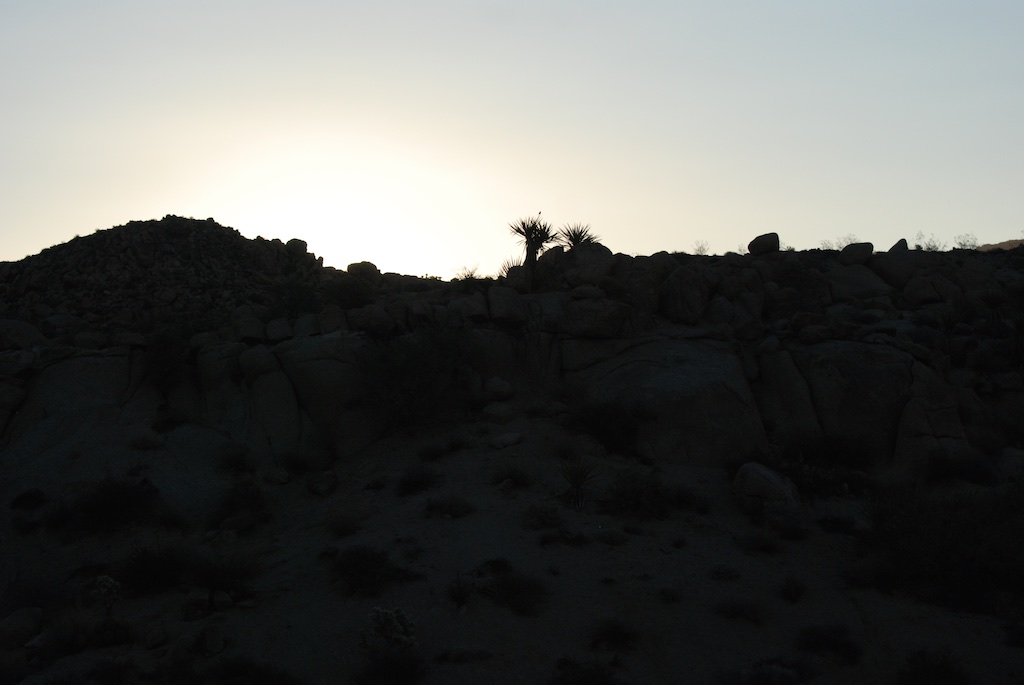 I didn't have much luck with great sunrise photos but the good thing about sunrise (besides that another great day is starting) is that the light is great for other photos.
I didn't have much luck with great sunrise photos but the good thing about sunrise (besides that another great day is starting) is that the light is great for other photos.
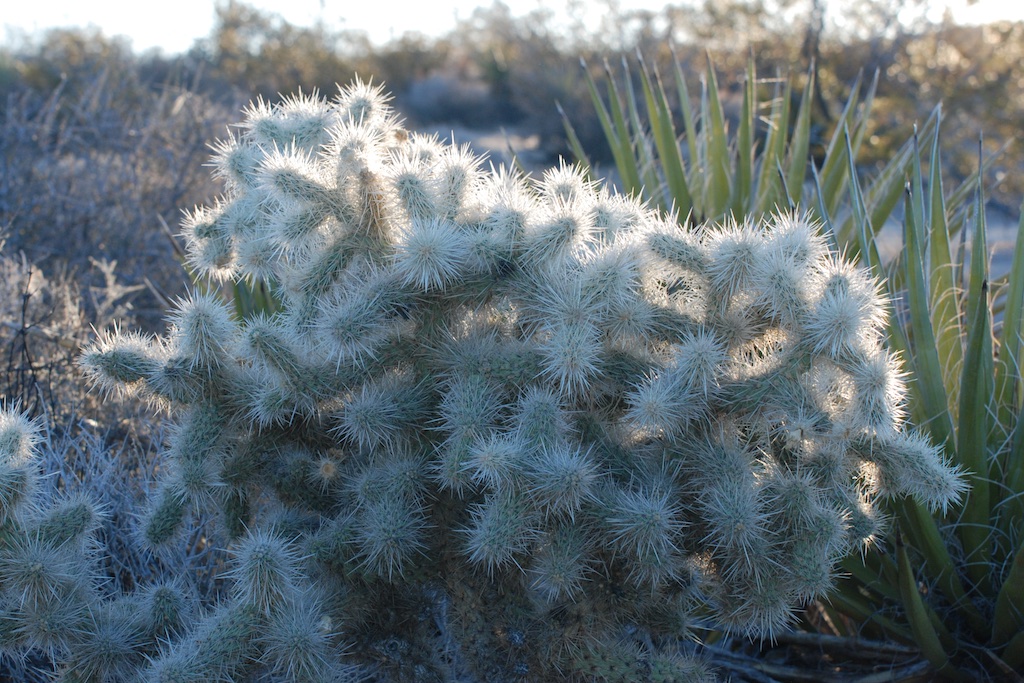 Have you ever seen so many spines?
Have you ever seen so many spines?
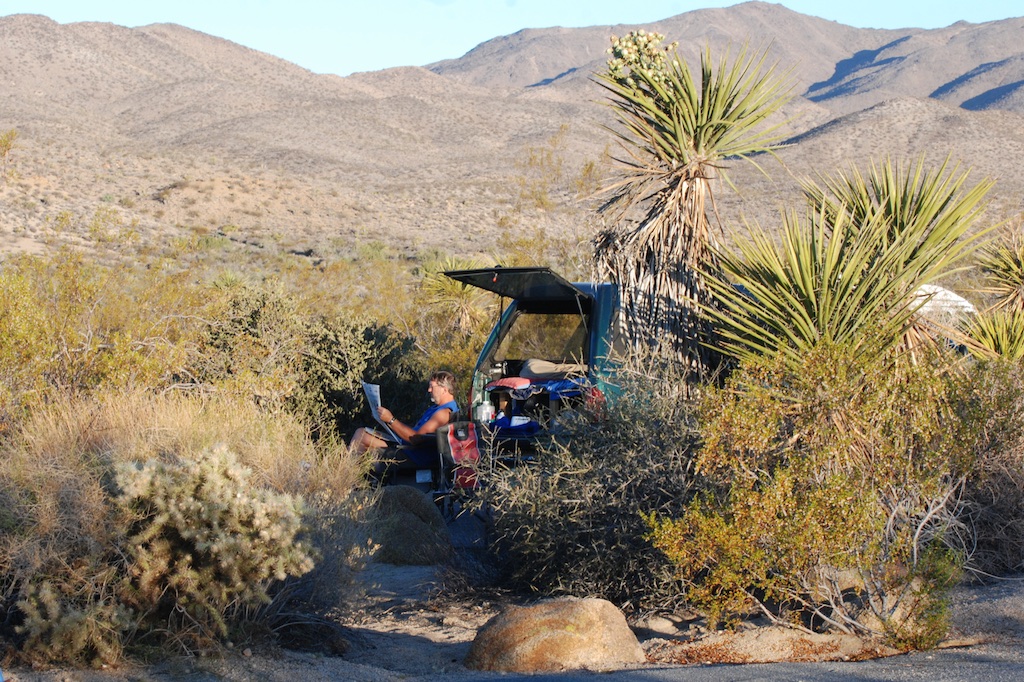 We had slept in the truck so it didn't take long to break camp. We had entered the park from the south and planned to drive through to the northern exit.
We had slept in the truck so it didn't take long to break camp. We had entered the park from the south and planned to drive through to the northern exit.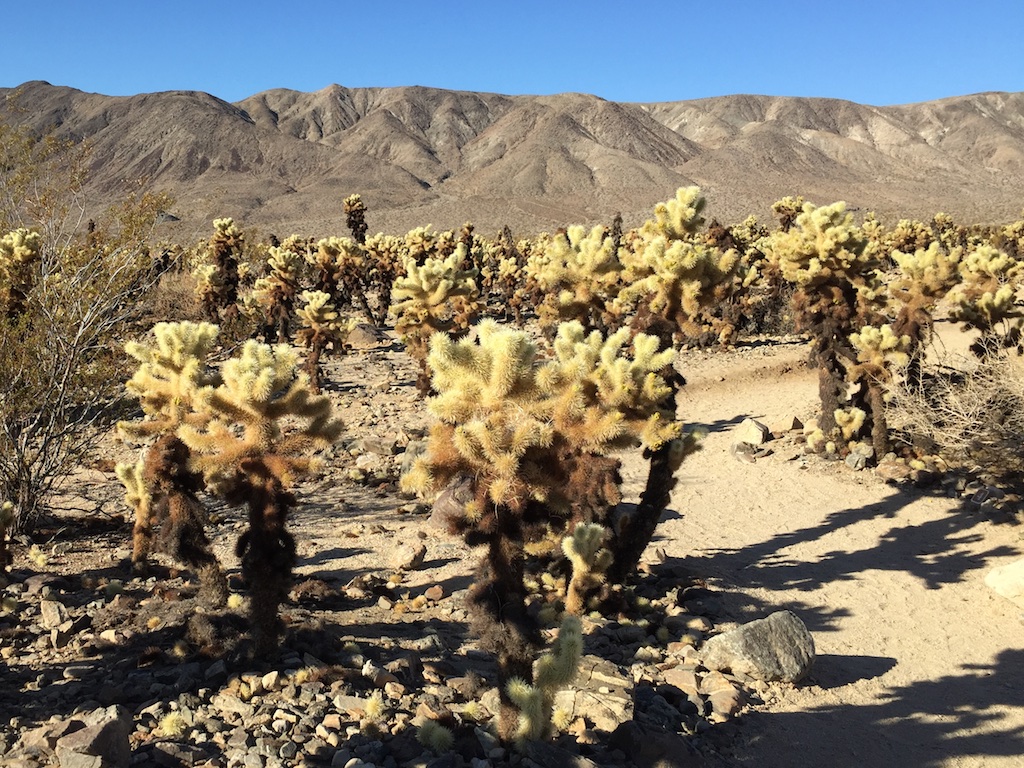 We stopped at the Cholla Cactus Garden, a nature trail constructed through the cholla with warnings to not touch...for your own safety!
We stopped at the Cholla Cactus Garden, a nature trail constructed through the cholla with warnings to not touch...for your own safety!
 I was not tempted to touch. This "jumping cholla" is known for it's tendency to attach to a passerby without much provocation.
I was not tempted to touch. This "jumping cholla" is known for it's tendency to attach to a passerby without much provocation.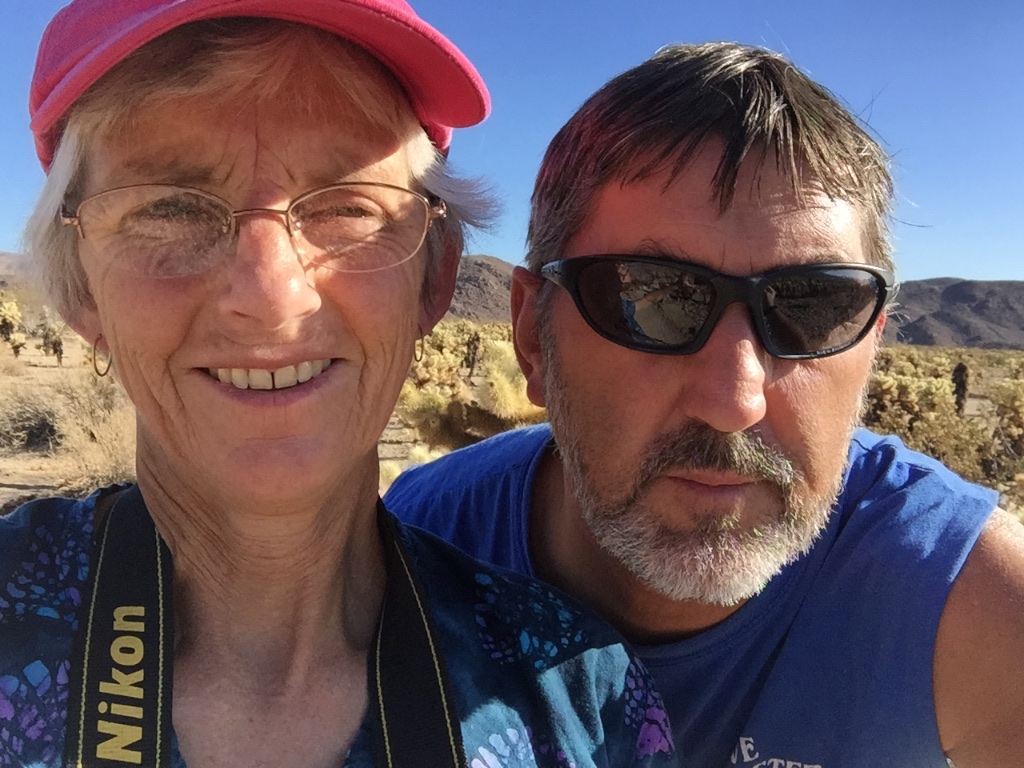
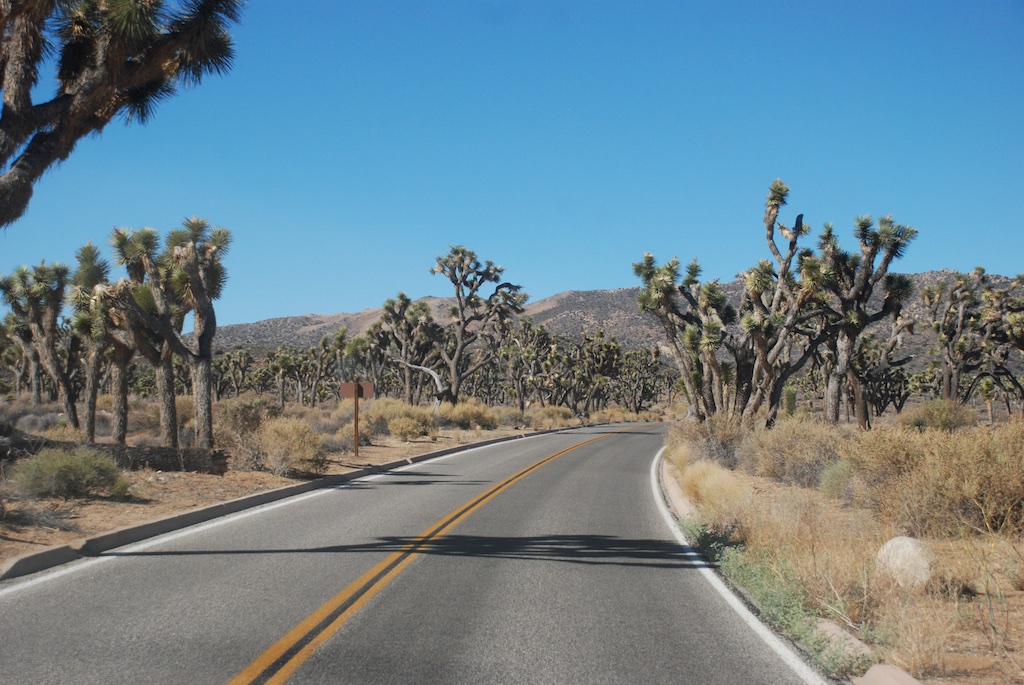 This is what the park is known for--the Joshua tree which is not really a tree, but a species of yucca that can grow to 40 feet tall. The park protects 794,000 acres of Mojave and Colorado Desert.
This is what the park is known for--the Joshua tree which is not really a tree, but a species of yucca that can grow to 40 feet tall. The park protects 794,000 acres of Mojave and Colorado Desert.
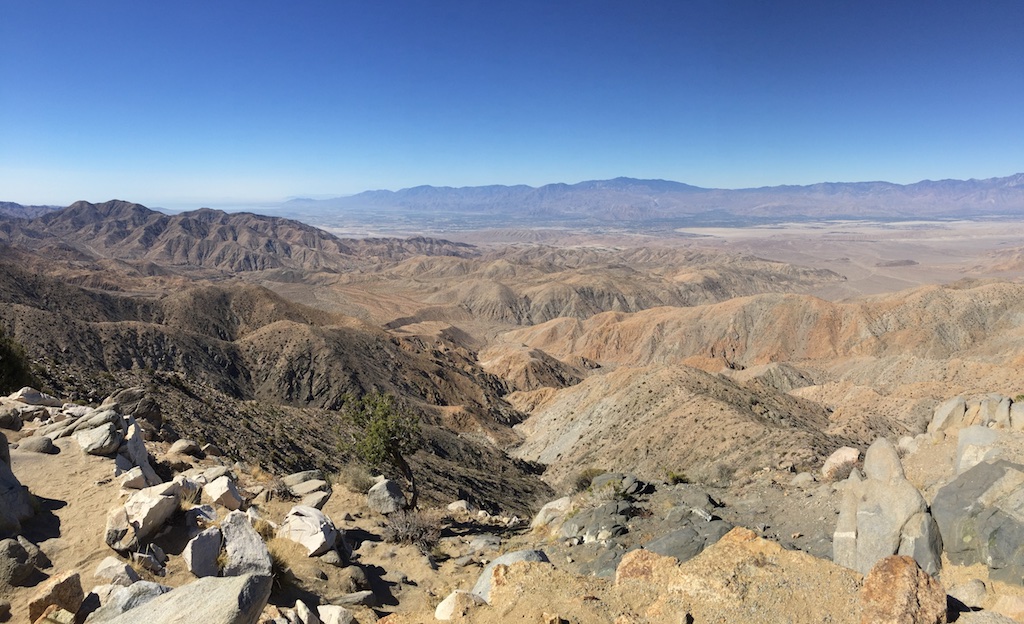 We drove to Keys View. At 5185 feet, its not the highest place in the park but I think it's the highest spot you can drive too. You can see the Coachella Valley to the southwest and Mount San Jacinto and Palm Springs to the north (just out of this photo)
We drove to Keys View. At 5185 feet, its not the highest place in the park but I think it's the highest spot you can drive too. You can see the Coachella Valley to the southwest and Mount San Jacinto and Palm Springs to the north (just out of this photo)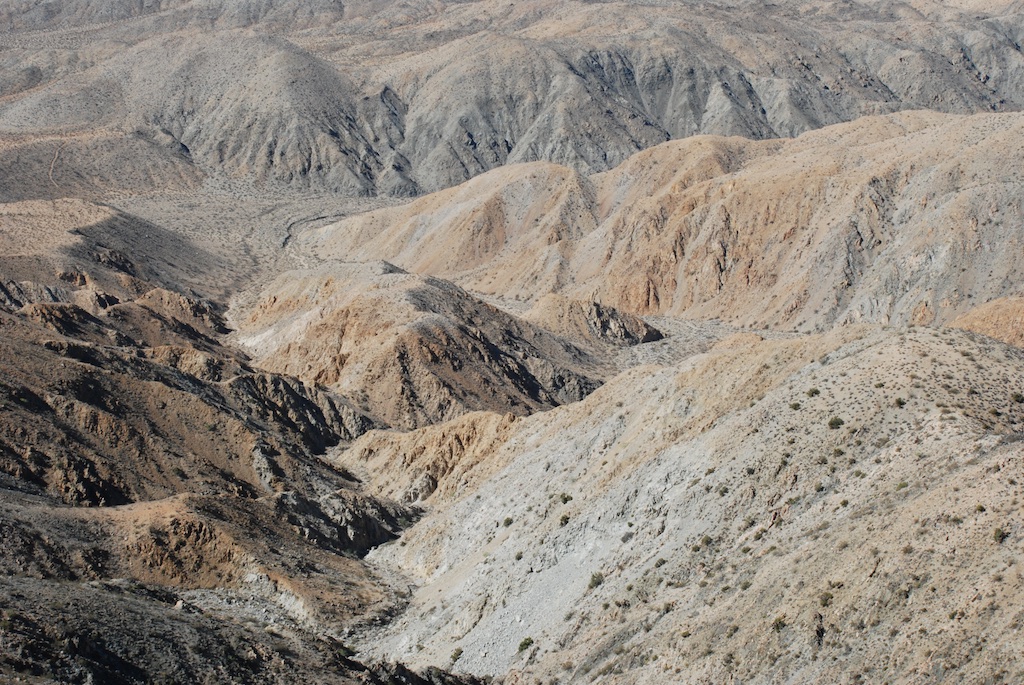
Joshua Tree Park has plenty more to come back to, especially if we could take a vacation in the spring. Can you imagine what it would be like for early settlers? There were miners, homesteaders, and ranchers who tried to make a go of it here and there are remnants of those homesteads and mines. 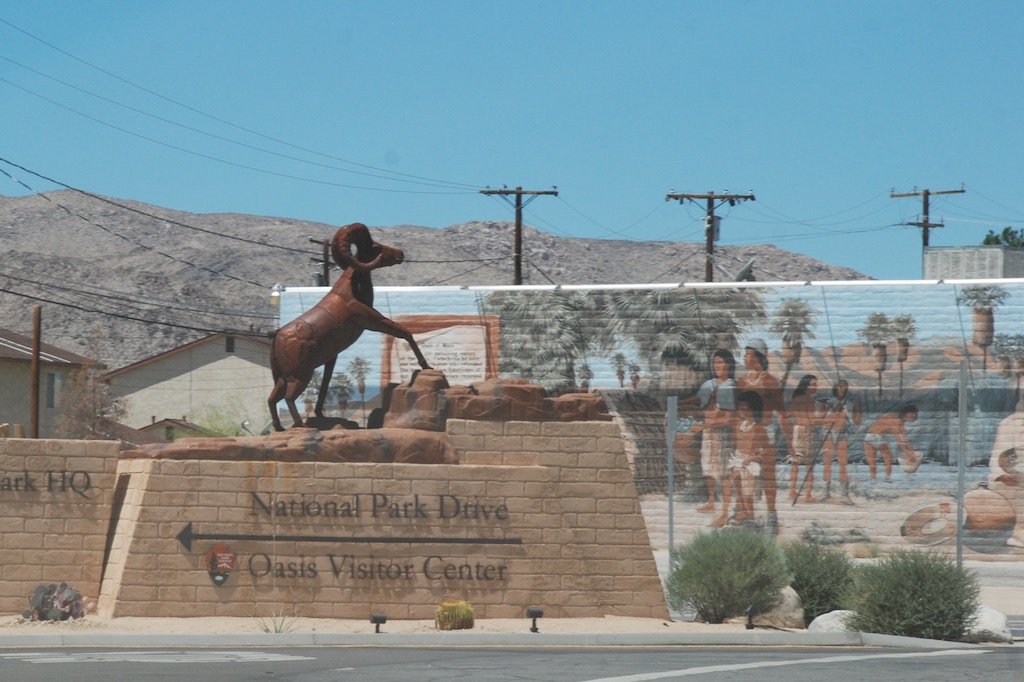 We stopped at the visitor center on the way out and saw this statue and mural when driving away. After seeing the interesting public art in southern New Mexico and Arizona I wish that I had been on the lookout for it in the earlier part of our trip.
We stopped at the visitor center on the way out and saw this statue and mural when driving away. After seeing the interesting public art in southern New Mexico and Arizona I wish that I had been on the lookout for it in the earlier part of our trip.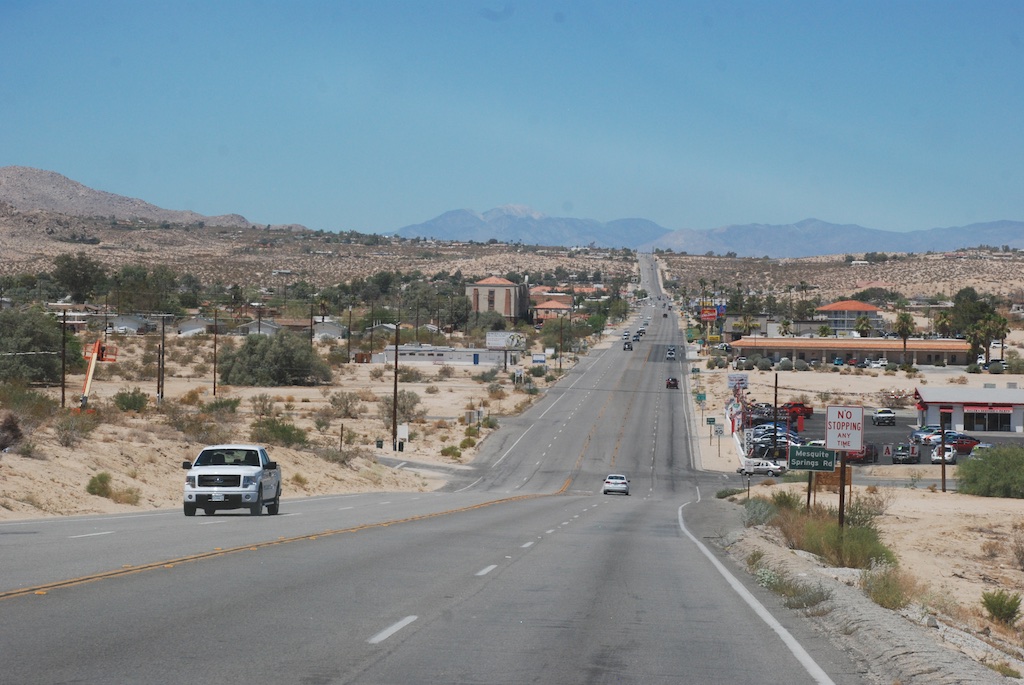 Leaving Joshua Tree NP and driving through the town of Twentynine Palms, now the plan was to just head home. California is a big place. The iPhone map showed almost 8 1/2 hours to go.
Leaving Joshua Tree NP and driving through the town of Twentynine Palms, now the plan was to just head home. California is a big place. The iPhone map showed almost 8 1/2 hours to go.
 More public art...or is this private art...or art at all? Amusement.
More public art...or is this private art...or art at all? Amusement.
 More amusement. This is the only souvenir I bought for myself (other than the National Park patches, which someday may be sewn to something but for now are on my bulletin board with others). This bighorn sheep now is on my big loom with a collection of other sheep.
More amusement. This is the only souvenir I bought for myself (other than the National Park patches, which someday may be sewn to something but for now are on my bulletin board with others). This bighorn sheep now is on my big loom with a collection of other sheep.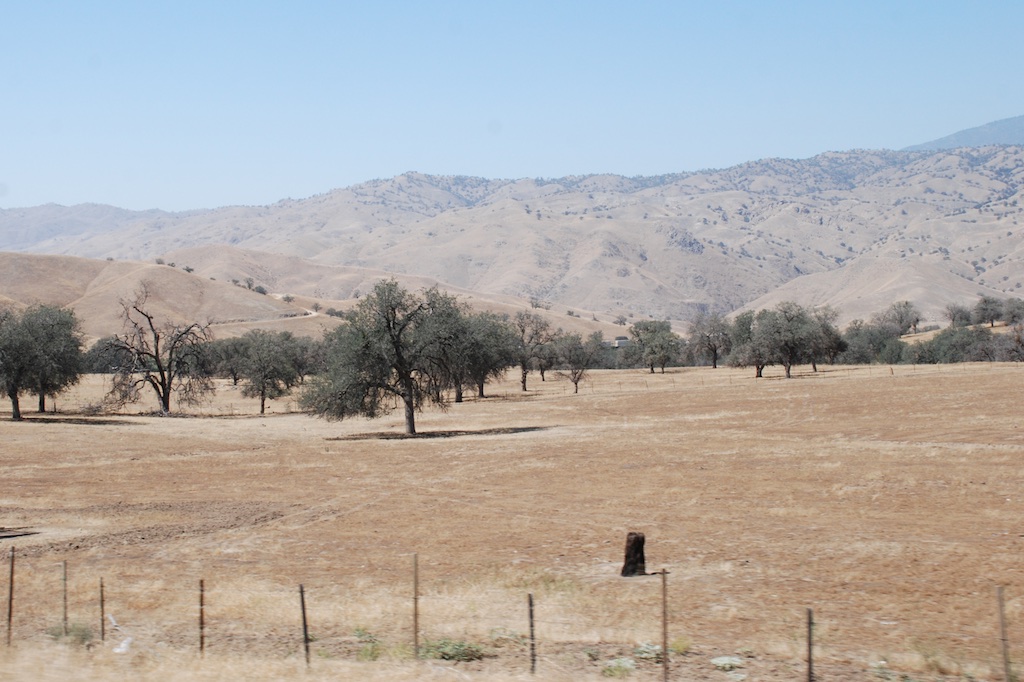 California oak woodland. Many hours still to go.
California oak woodland. Many hours still to go.
 Looking west from near Rio Vista. We live on the western side of the Central Valley and those are "our" mountains in the distance.
Looking west from near Rio Vista. We live on the western side of the Central Valley and those are "our" mountains in the distance.
This was a long day of driving. We woke up in a campground in New Mexico and ended up...well, you'll have to get through this post to find out. There are lots of photos.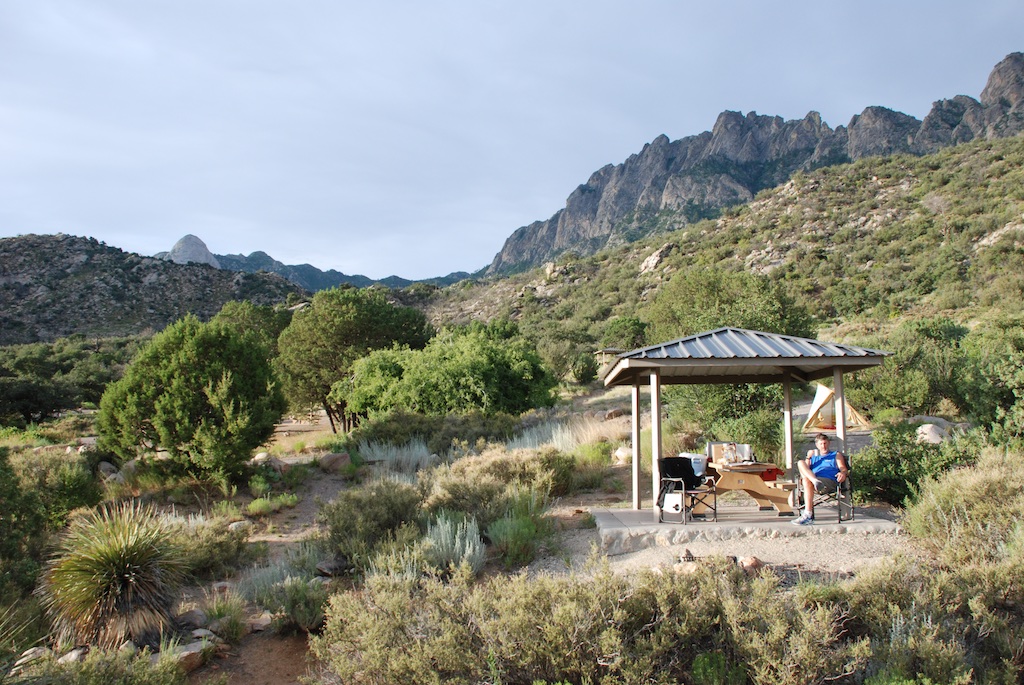 We camped at Organ Mountains National Recreation Area in New Mexico.
We camped at Organ Mountains National Recreation Area in New Mexico. 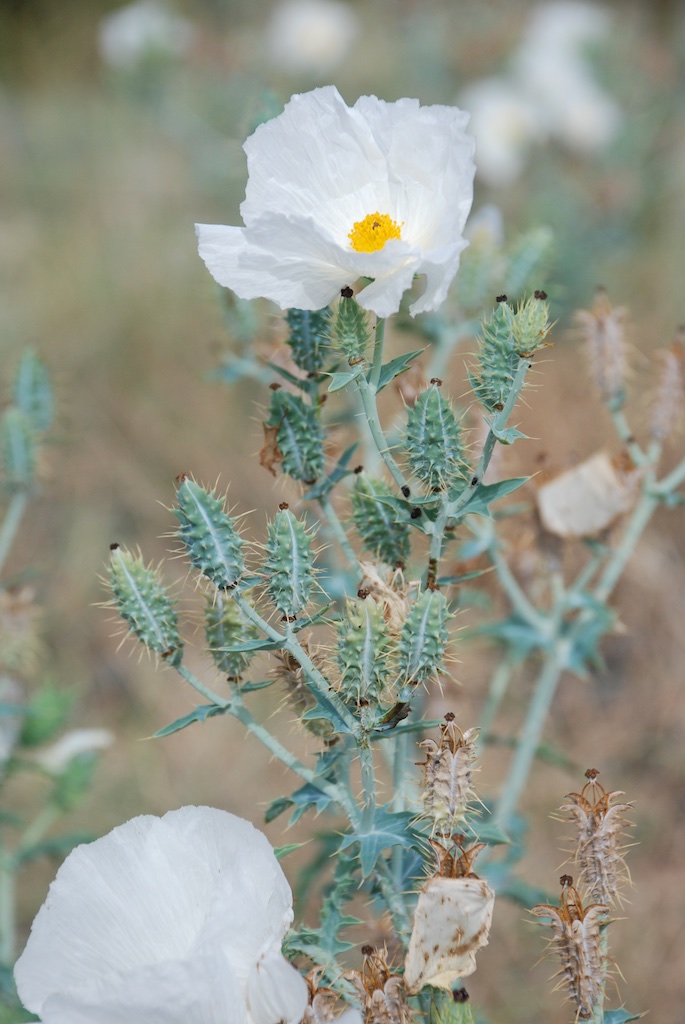 Leaving the campground we stopped for a couple of photos. This is prickly poppy...
Leaving the campground we stopped for a couple of photos. This is prickly poppy...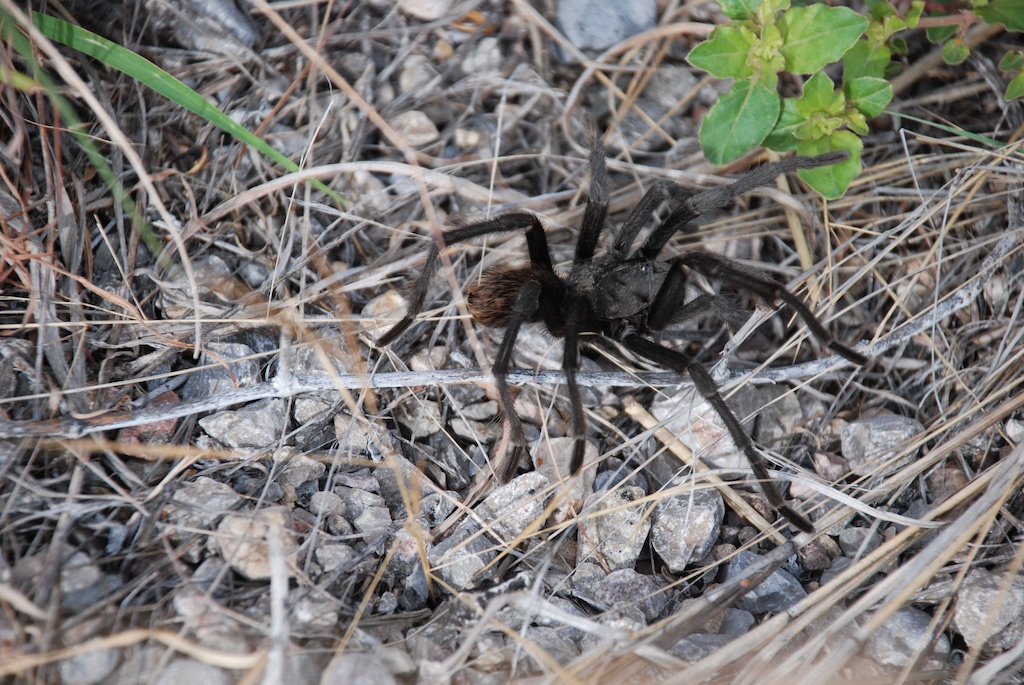 ...and here is my first tarantula seen "in the wild". It was actually on the road and Dan pulled over to point it out.
...and here is my first tarantula seen "in the wild". It was actually on the road and Dan pulled over to point it out. Turning back onto the main road from White Sands to Las Cruces we spotted this flower-festooned, white bike above the road. I will admit that I am annoyed by the preponderance of "memorials" along our California roads but this seemed a poignant statement.
Turning back onto the main road from White Sands to Las Cruces we spotted this flower-festooned, white bike above the road. I will admit that I am annoyed by the preponderance of "memorials" along our California roads but this seemed a poignant statement.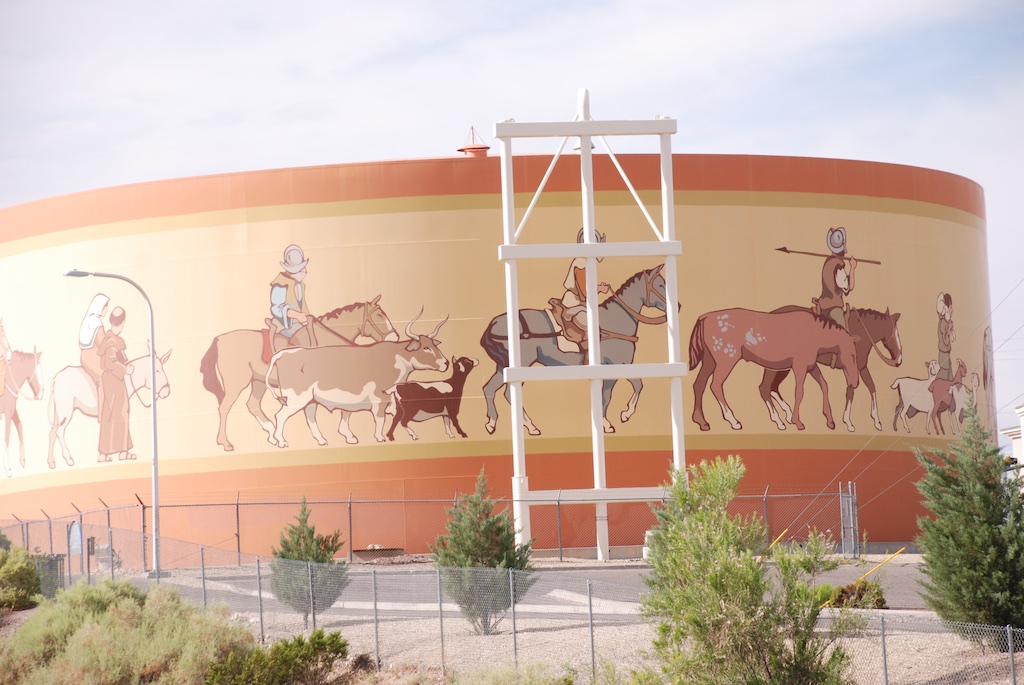 There was the water tank with a mural commemorating the space industry the previous day. We saw more driving back through Las Cruces.
There was the water tank with a mural commemorating the space industry the previous day. We saw more driving back through Las Cruces.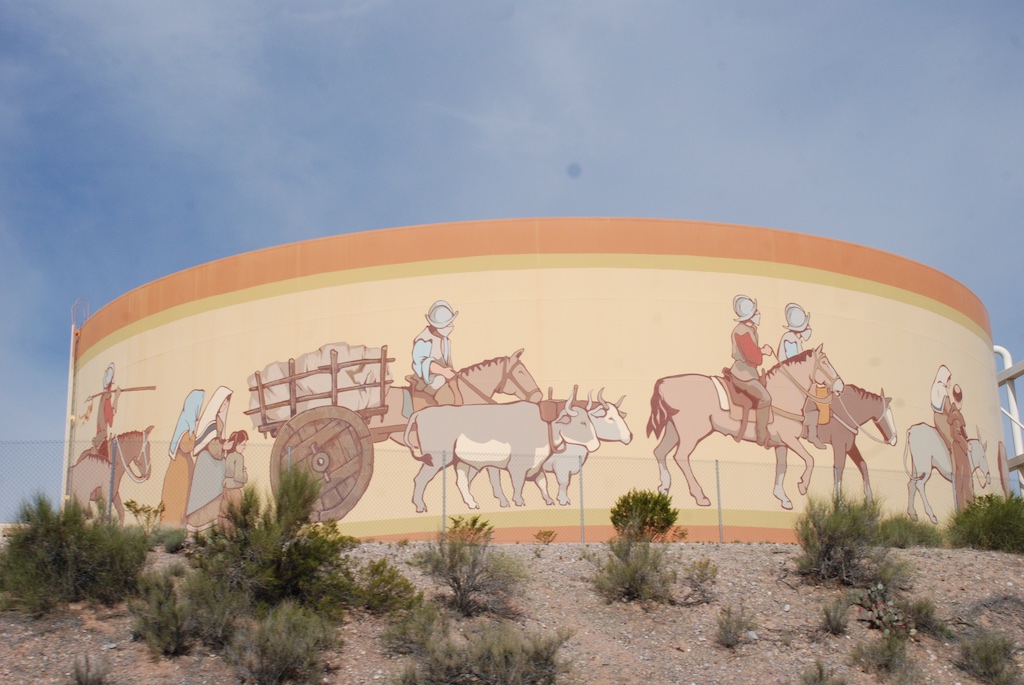 I googled and found that there is a website describing these murals that depict historical events in New Mexico.
I googled and found that there is a website describing these murals that depict historical events in New Mexico.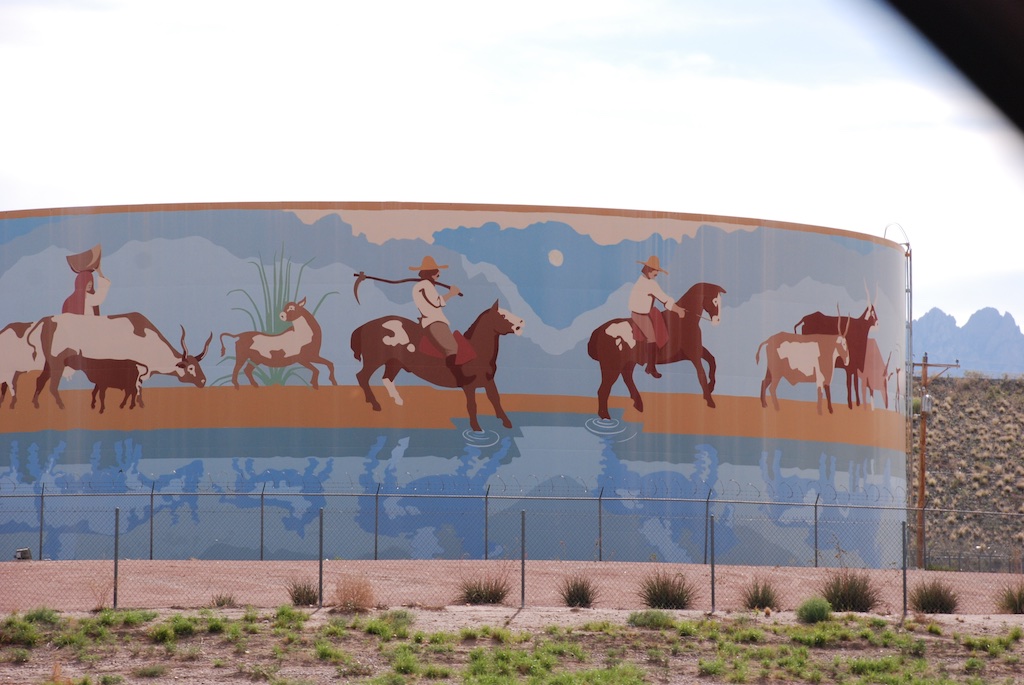 Back on Interstate 10 heading to Arizona.
Back on Interstate 10 heading to Arizona.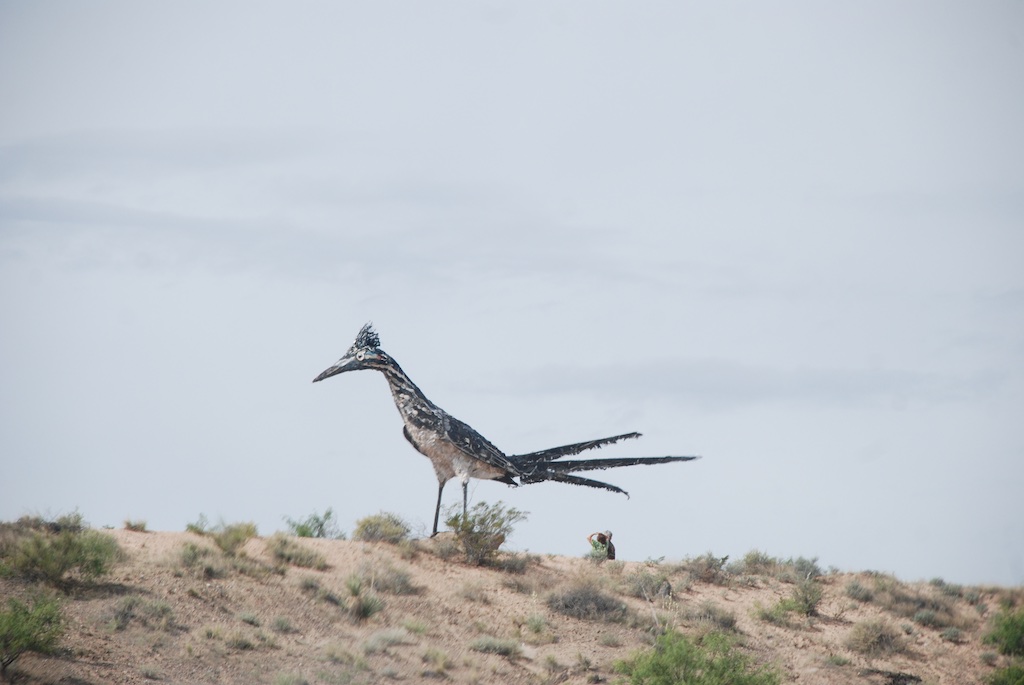 I love this giant roadrunner. I looked this up also. It's 20 feet tall and 40 feet long and after it was constructed in 1993 "it was stationed at what was then the Las Cruces Foothills Landfill, as a kind of encouragement to creative recycling projects". Now it is along the freeway for travelers to see.
I love this giant roadrunner. I looked this up also. It's 20 feet tall and 40 feet long and after it was constructed in 1993 "it was stationed at what was then the Las Cruces Foothills Landfill, as a kind of encouragement to creative recycling projects". Now it is along the freeway for travelers to see.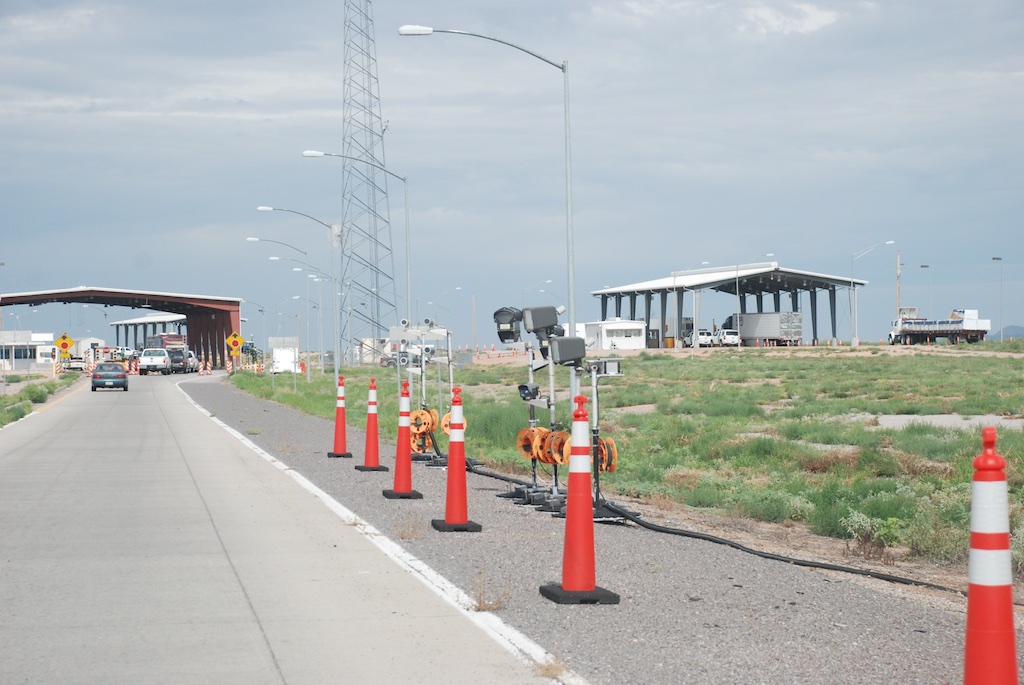 This is the Border Patrol Inspection Station west of Las Cruces. Can you tell what is behind those orange cones?
.
This is the Border Patrol Inspection Station west of Las Cruces. Can you tell what is behind those orange cones?
. I guess the weren't going to ask about the two Texas peaches that were still in our truck.
I guess the weren't going to ask about the two Texas peaches that were still in our truck.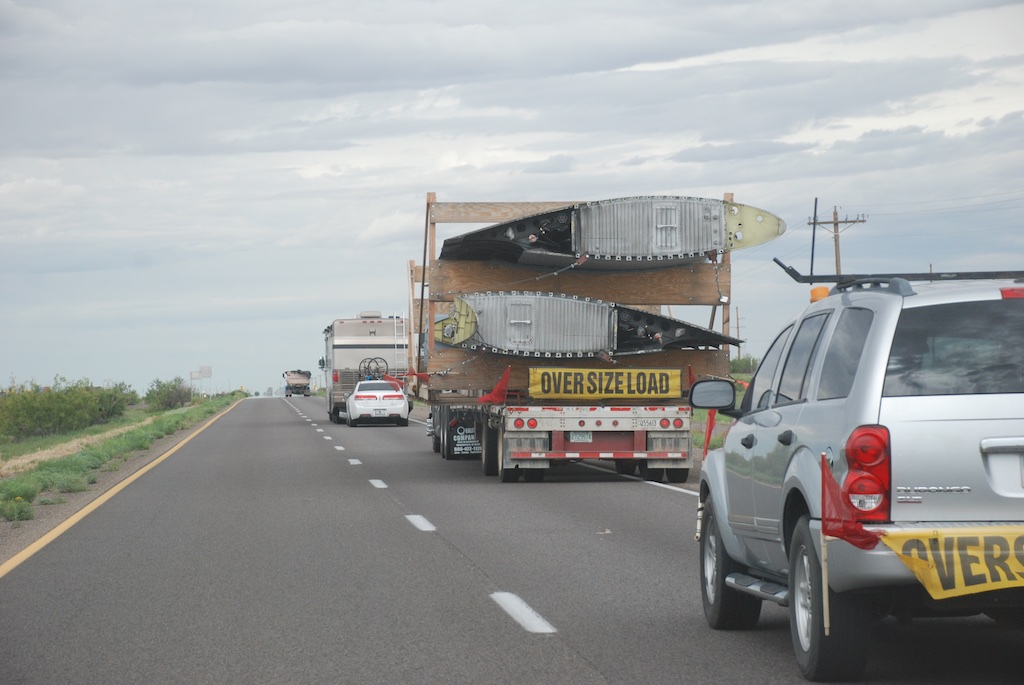 You never know what you'll see on the interstate. This truck was carrying a dismantled airplane.
You never know what you'll see on the interstate. This truck was carrying a dismantled airplane.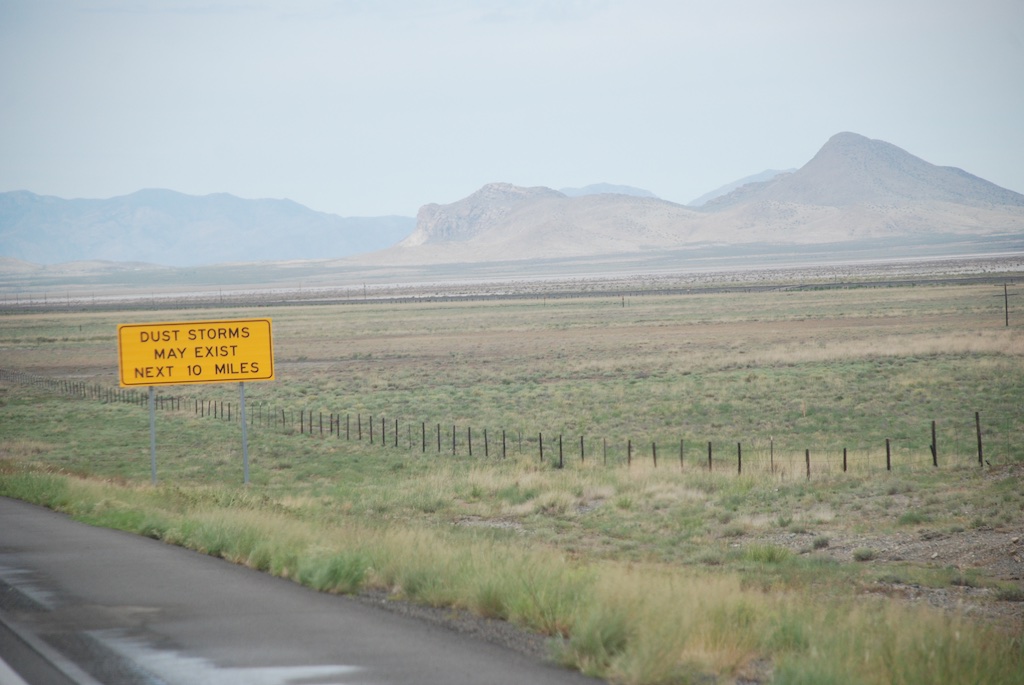 Entering the Lordsburg Playa. A playa is a "desert basin with no outlet which periodically fills with water to form a temporary lake".
Entering the Lordsburg Playa. A playa is a "desert basin with no outlet which periodically fills with water to form a temporary lake". 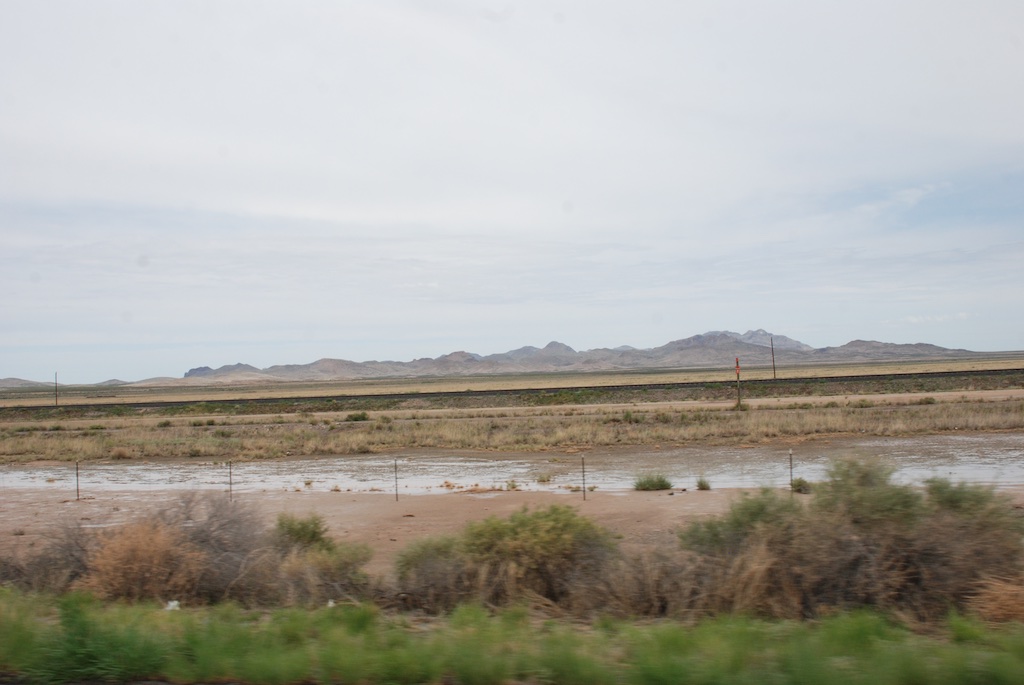 No danger of dust storms today.
No danger of dust storms today.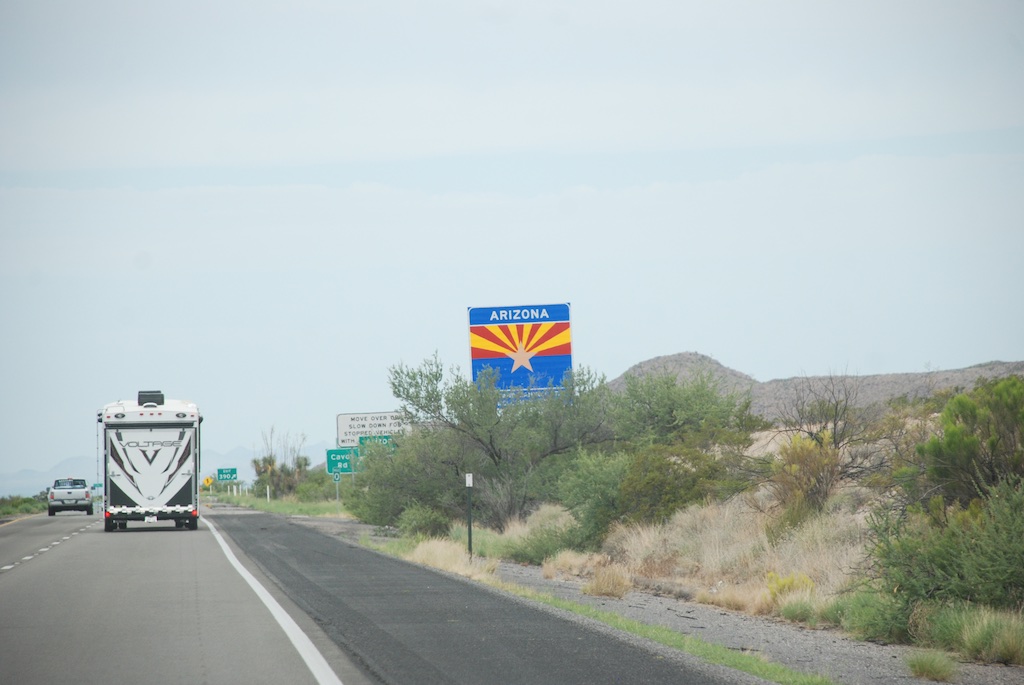
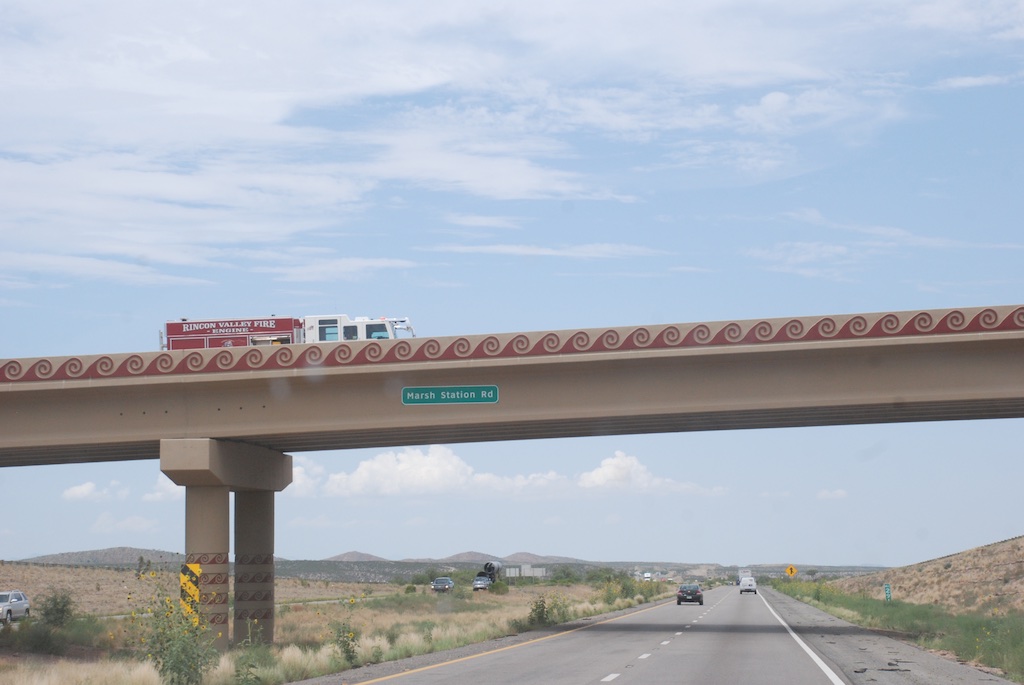 I was enamored by more Public Art in unexpected places.
I was enamored by more Public Art in unexpected places.
Driving into Tuscon I spotted the Saguaro National Park on the map. We decided to take a couple of hours to investigate. Two hours isn't enough to see a 91,000 acre park that is split into two halves, one on each side of Tucson, but at least we got an impression of it.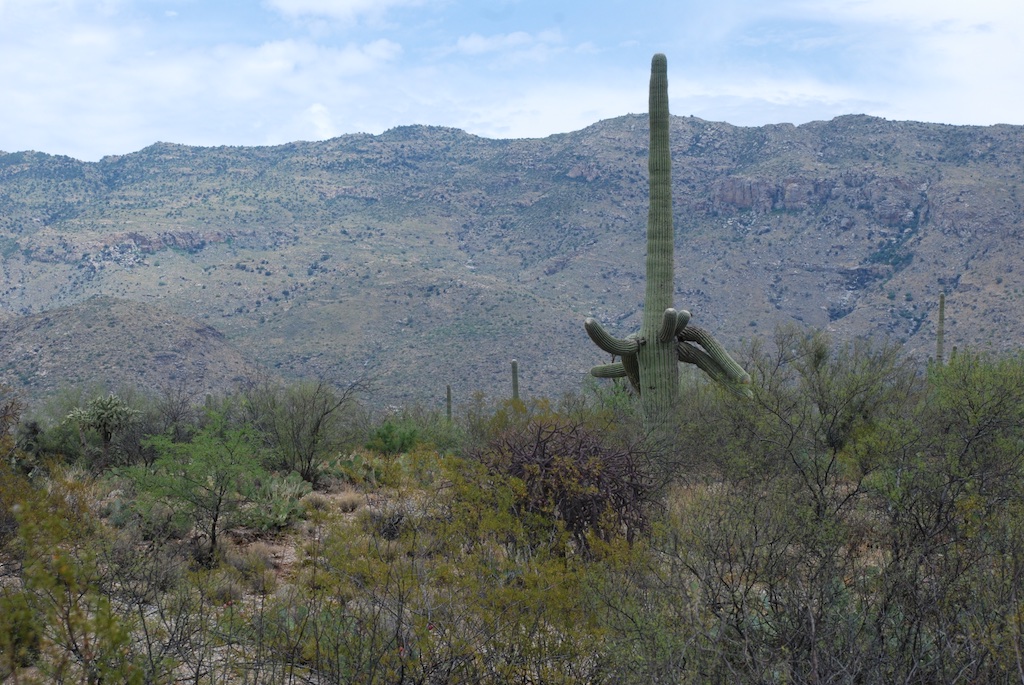
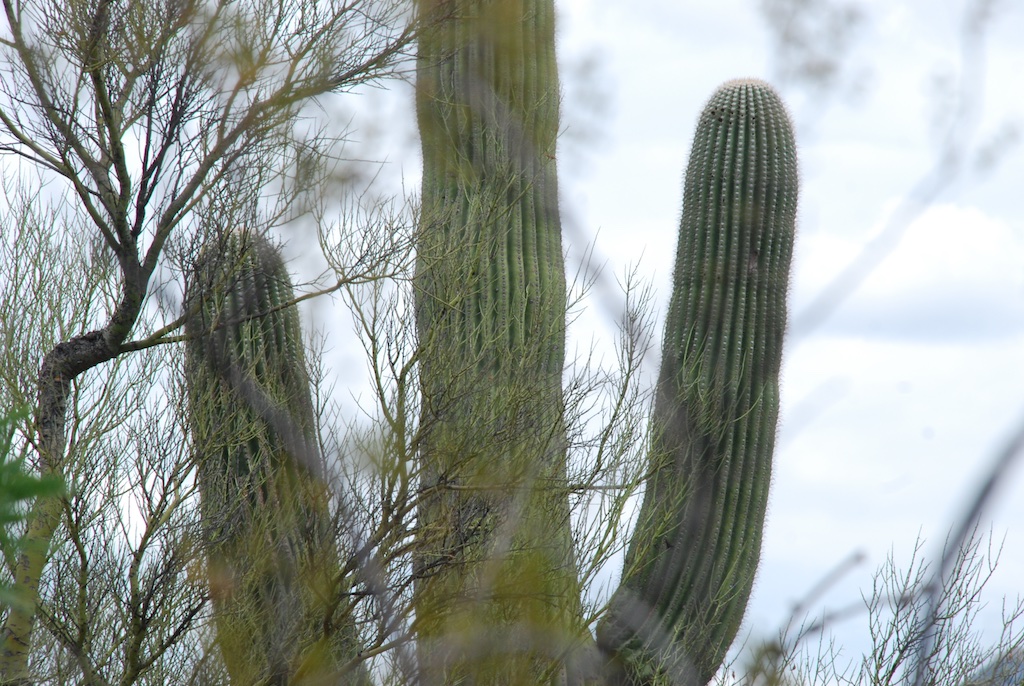 I didn't take many photos of saguaro because I couldn't do them justice...
I didn't take many photos of saguaro because I couldn't do them justice... ...but there were plenty of other spiny things to photograph.
...but there were plenty of other spiny things to photograph.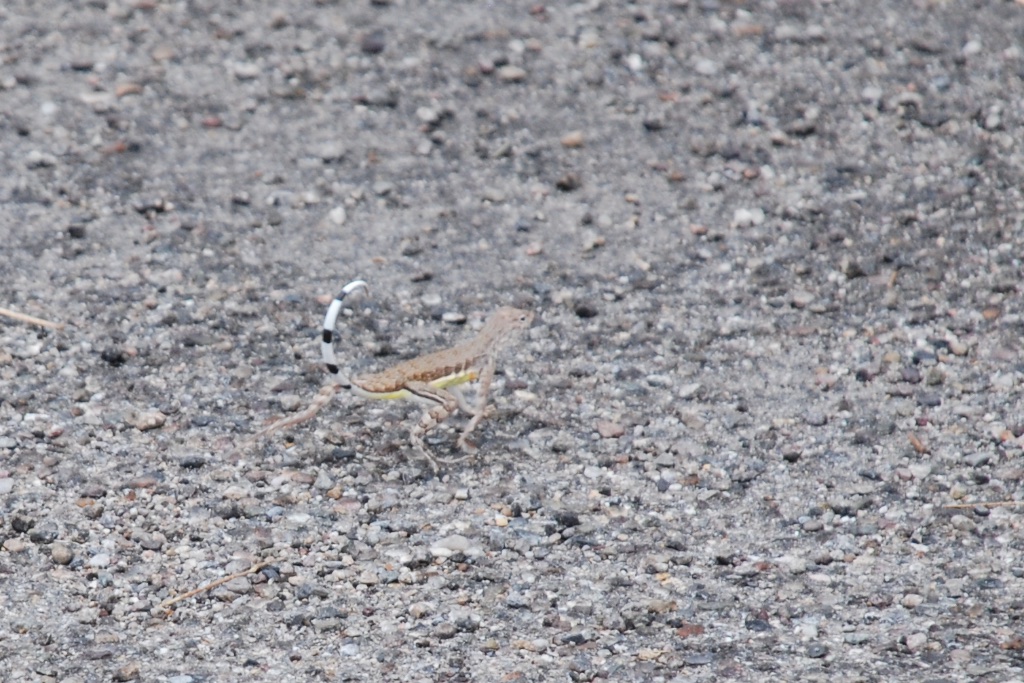 I caught a glimpse (and a photo) of this zebra-tailed lizard running away just as we got out of the truck to walk on one of the trails.
I caught a glimpse (and a photo) of this zebra-tailed lizard running away just as we got out of the truck to walk on one of the trails.
We drove the loop in the eastern section of the park and then stopped at the visitor center.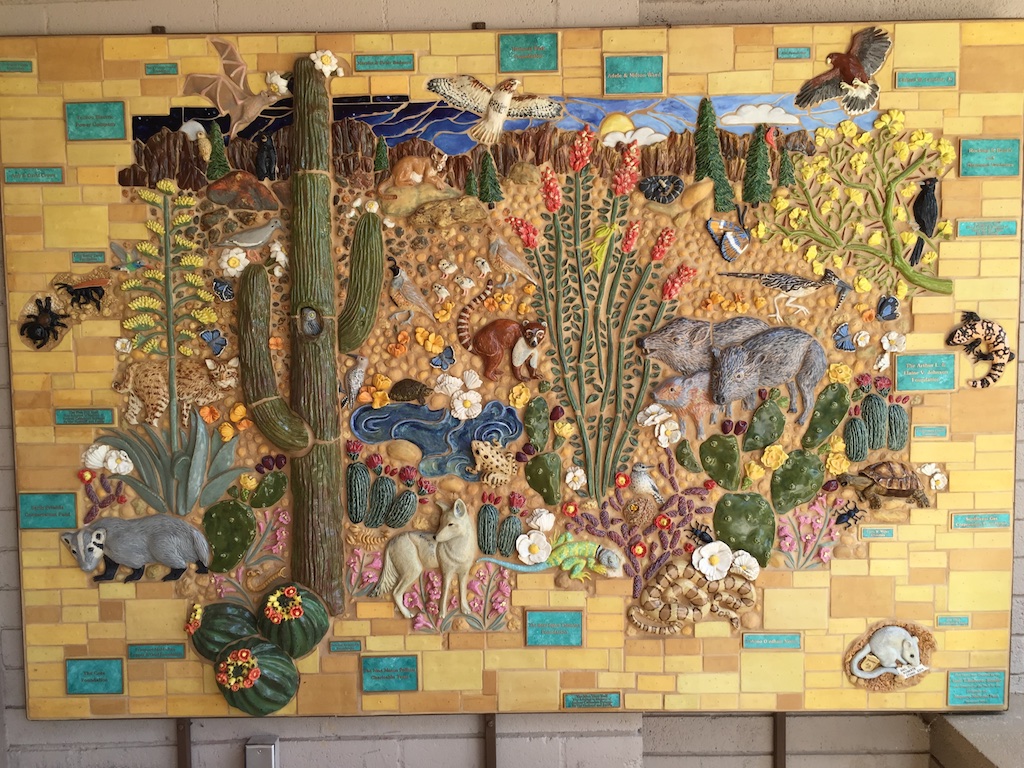
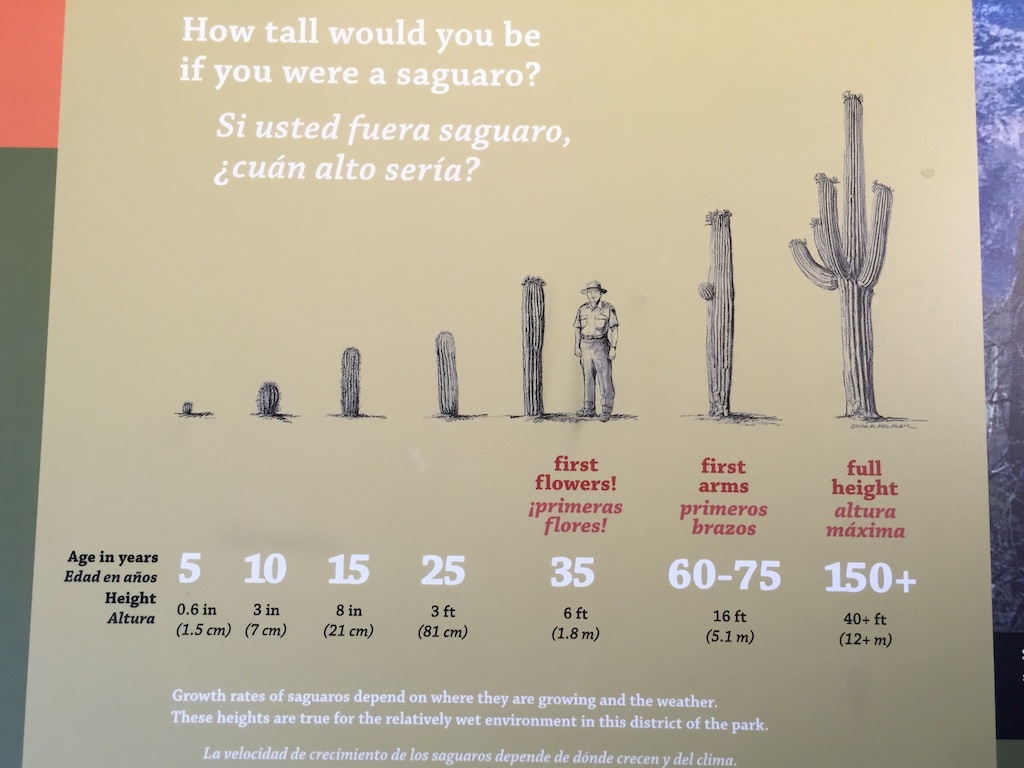 Look back at those couple of photos of saguaro and imagine how old they are. Saguaro depend on nurse trees such as palo verde or mesquite to survive the first several years. Each plant produces tens of thousands of seeds each year but very few survive to grow into mature plants.
Look back at those couple of photos of saguaro and imagine how old they are. Saguaro depend on nurse trees such as palo verde or mesquite to survive the first several years. Each plant produces tens of thousands of seeds each year but very few survive to grow into mature plants.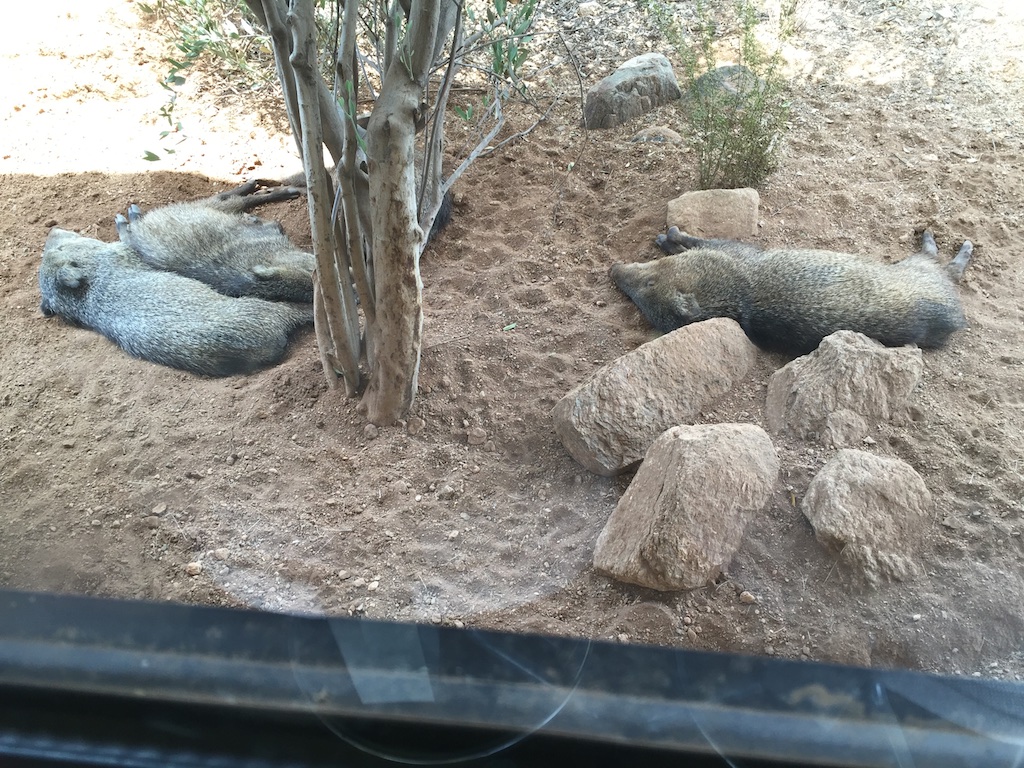 At least one herd of javelina (herd? flock? gang?) have figured out a safe and shady place to spend their afternoons. This is in back of the visitor center.
At least one herd of javelina (herd? flock? gang?) have figured out a safe and shady place to spend their afternoons. This is in back of the visitor center.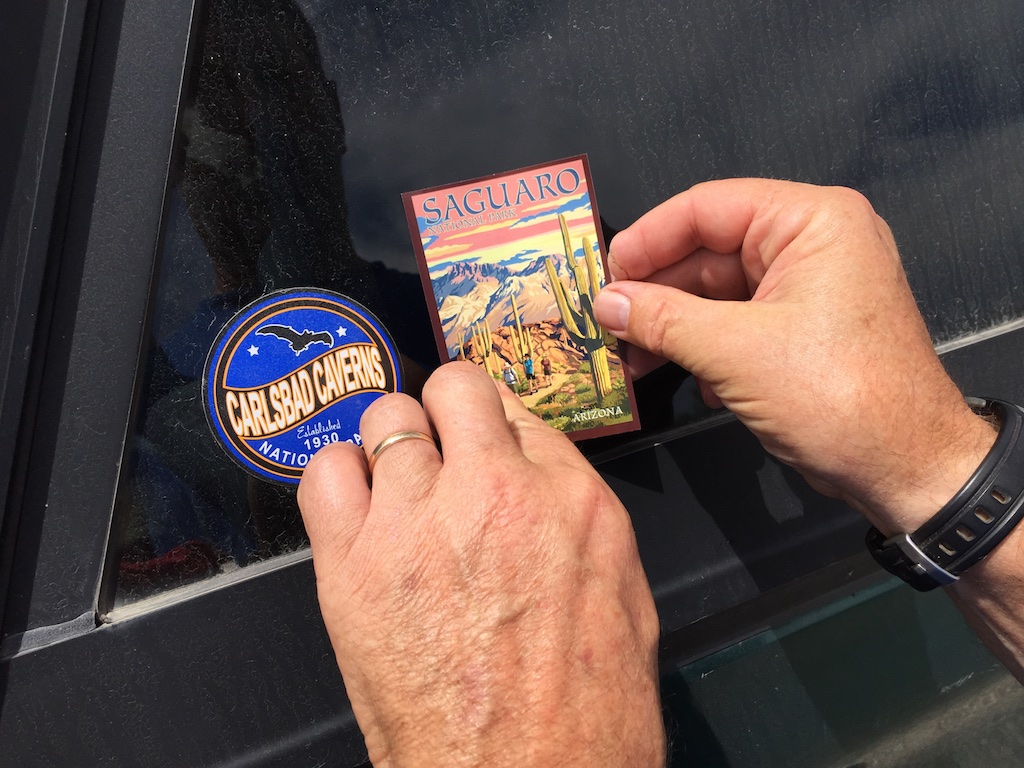 On the road again.
On the road again.
 More public art? Being something of a realist, I'm not so sure about this one.
More public art? Being something of a realist, I'm not so sure about this one.
 There was plenty of art around the Phoenix area which is good because we missed the cutoff to avoid the whole metropolitan area. We hit Phoenix at rush hour (slow hours).
There was plenty of art around the Phoenix area which is good because we missed the cutoff to avoid the whole metropolitan area. We hit Phoenix at rush hour (slow hours).
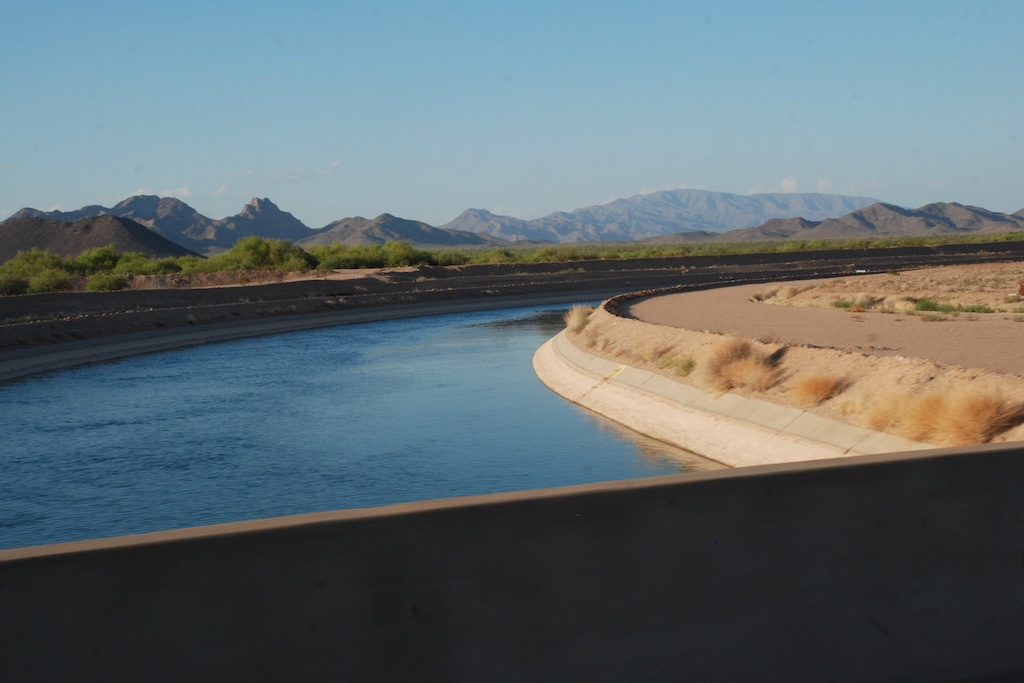 West of Phoenix we crossed the Arizona Central Project Canal that diverts water from the Colorado River to central and southern Arizona. According to Wikipedia "The CAP is the largest and most expensive aqueduct system ever constructed in the United States." I can't help but think, what have we got ourselves into? Whether we're talking about Arizona, Las Vegas, southern California, or Central Valley agriculture, it seems there is no going back without disastrous consequences. Our infrastructure is based on major water diversion and our population requires that these systems function. But, these are deserts, folks! Now what?...But I digress.
West of Phoenix we crossed the Arizona Central Project Canal that diverts water from the Colorado River to central and southern Arizona. According to Wikipedia "The CAP is the largest and most expensive aqueduct system ever constructed in the United States." I can't help but think, what have we got ourselves into? Whether we're talking about Arizona, Las Vegas, southern California, or Central Valley agriculture, it seems there is no going back without disastrous consequences. Our infrastructure is based on major water diversion and our population requires that these systems function. But, these are deserts, folks! Now what?...But I digress.
 Dusk in Arizona.
Dusk in Arizona. Blurry in the fading light, but I can read it.
Blurry in the fading light, but I can read it.
 Sunset in California. Now to find our camping spot. No photos after dark so that will be for the next post.
Sunset in California. Now to find our camping spot. No photos after dark so that will be for the next post.
At Meridian Jacobs farm we raise Jacob sheep and sell locally grown wool fiber, yarn, and handwoven goods. We teach fiber classes and sell Ashford, Clemes & Clemes, and Schacht spinning and weaving equipment. We encourage farm visits with field trips and our unique Farm Club.
Search blog posts since 2019. If the search says it can’t find a post try putting in your search word a second time. I don’t know why but the second time it seems to work.
Search the entire website, including older blog posts.